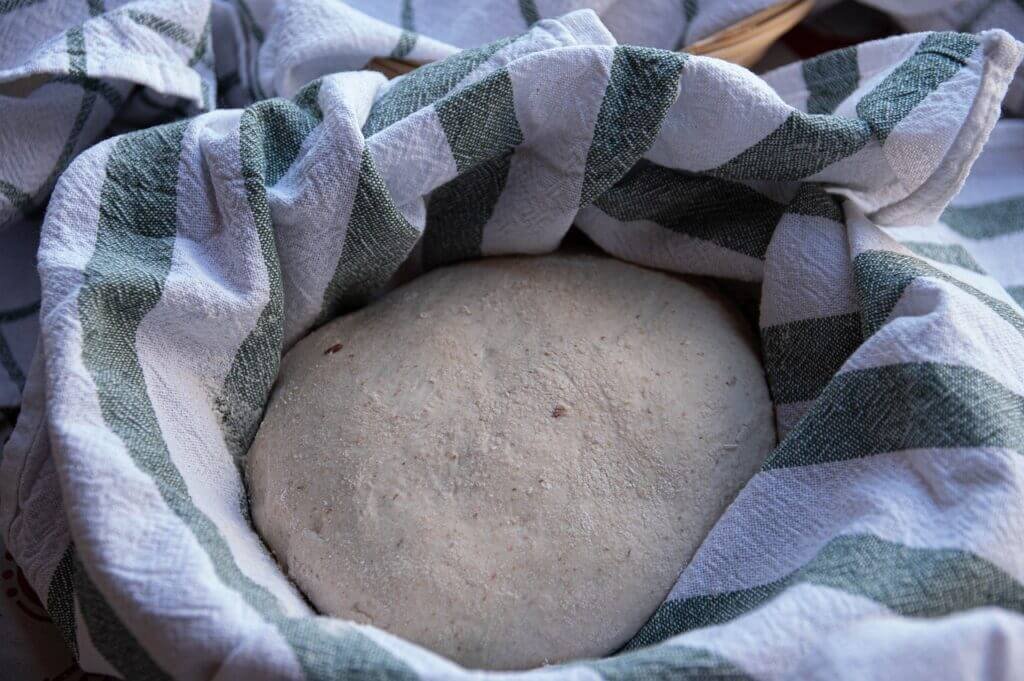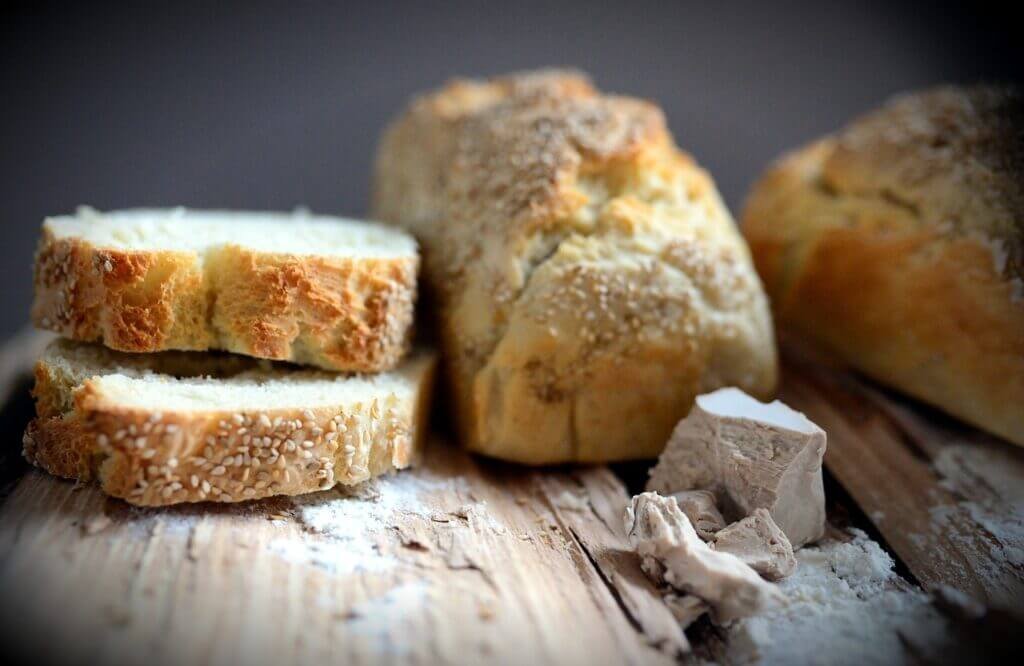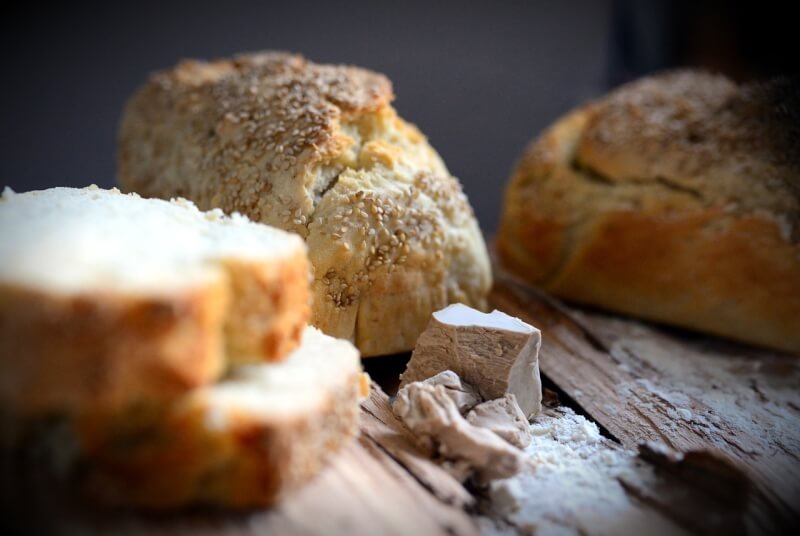Have you ever wondered why your bread rises and becomes fluffy and delicious? It’s all thanks to the small yet mighty organism called yeast. In the fascinating world of bread baking, yeast plays a crucial role in transforming simple ingredients into a heavenly loaf of bread. This article will explore the essential role of yeast in bread making, from its humble beginnings to the miraculous process of fermentation. Get ready to unravel the science behind your favorite baked goods and discover the magic of yeast in bread baking.

I. Overview of Yeast
A. Introduction to yeast
Yeast is a microorganism that plays a crucial role in bread baking. It is a type of fungus that belongs to the Saccharomyces cerevisiae species. It is often used as a leavening agent in baking, which means it helps dough rise and gives bread its fluffy texture. Yeast is also responsible for adding a distinct flavor and aroma to bread, making it an essential ingredient in the world of baking.
B. Types of yeast
There are several types of yeast available for baking. The most commonly used yeast is the active dry yeast, which comes in the form of dehydrated granules. Instant yeast, on the other hand, is a more finely-ground version of active dry yeast and doesn’t require activation before adding it to the dough. Another popular type is fresh or compressed yeast, which is sold in a solid cake form. Each type of yeast has its own characteristics and preferred method of use, allowing bakers to choose the one that suits their baking needs best.
C. Yeast as a leavening agent
Yeast acts as a leavening agent by undergoing a process called fermentation. During this process, yeast consumes sugars present in the dough and produces carbon dioxide gas, which creates air pockets within the dough. As the dough rises, these air pockets expand, causing the bread to become light and fluffy. The activity of yeast in the dough also contributes to the development of the bread’s flavor and aroma.
II. Fermentation Process
A. Role of yeast in fermentation
Yeast is an essential component of the fermentation process in bread baking. When yeast is mixed with dough, it feeds on the sugars present and converts them into alcohol and carbon dioxide through a process called anaerobic respiration. This fermentation process is what causes the dough to rise and gives bread its characteristic texture.
B. Anaerobic respiration
Yeast carries out anaerobic respiration, which means it doesn’t require oxygen to generate energy. Instead, it breaks down glucose and other sugars in the absence of oxygen to produce carbon dioxide, alcohol, and other byproducts. This process is crucial for yeast’s role in bread baking, as it generates the gas necessary for the dough to rise.
C. Production of carbon dioxide
One of the key byproducts of yeast fermentation is carbon dioxide gas. As yeast consumes sugars, it releases carbon dioxide, which gets trapped within the dough, causing it to inflate. This gas is responsible for creating the airy texture of bread and forming distinct air pockets within the crumb.
D. Alcohol production
Alongside carbon dioxide, yeast also produces alcohol during fermentation. Although most of the alcohol evaporates during the baking process, it contributes to the flavor and aroma of the bread. The amount of alcohol produced by yeast can vary depending on factors such as temperature and fermentation time.

III. Dough Rising
A. Yeast activation
Before yeast can be used in bread baking, it needs to be activated or “proofed” to ensure its viability. This involves mixing yeast with warm water and a small amount of sugar, allowing it to rehydrate and become active. The addition of sugar provides nourishment for the yeast, helping it grow and multiply before being added to the dough. Proper yeast activation is crucial for achieving a good rise in the dough.
B. Formation and function of gluten
Gluten is a mixture of proteins found in wheat flour. When water is added to flour, gluten begins to form. Yeast plays a vital role in the development of gluten in bread dough. As the dough ferments, yeast releases enzymes that break down the proteins in the flour, promoting the formation and strengthening of gluten strands. Gluten gives bread its elasticity and structure, allowing it to rise and hold its shape.
C. Gas retention and structure of the dough
During fermentation, yeast produces carbon dioxide gas, which becomes trapped within the gluten network of the dough. This gas is responsible for creating pockets of air, giving the dough its light and airy texture. As the dough rises, the gluten network expands and stretches, supporting the structure of the bread. Without the activity of yeast, the dough would remain dense and flat.
D. Enhanced flavor development
Yeast not only contributes to the texture of bread but also plays a significant role in enhancing the flavor. As yeast ferments and produces alcohol, it adds a distinct taste to the bread. Additionally, the byproducts of yeast metabolism contribute to the development of complex flavor compounds during fermentation. The longer the fermentation process, the more time yeast has to add depth and complexity to the bread’s flavor profile.
IV. Flavor and Aroma
A. Yeast’s impact on flavor profile
Yeast is a key factor in determining the flavor profile of bread. Different strains of yeast produce varying flavors, ranging from mild and nutty to fruity or even slightly tangy. The type of yeast used, fermentation temperature, and duration all influence the final taste of the bread. Bakers can experiment with different yeast strains to achieve the desired flavor in their bread.
B. Production of volatile compounds
During fermentation, yeast generates volatile compounds that contribute to the aroma of bread. These compounds include esters, aldehydes, and alcohols, which can create fruity, nutty, or malty scents. The balance and concentration of these compounds are influenced by the yeast strain, fermentation conditions, and the ingredients used in the dough. The aroma adds to the overall sensory experience of enjoying freshly baked bread.
C. Some specific yeast strains and flavors
Certain yeast strains are well-known for their unique flavors and aromas. For example, the Belgian yeast strain Saccharomyces cerevisiae var. diastaticus produces a spicy and peppery flavor. Another strain, Saccharomyces bayanus, is commonly used in making champagne and produces a crisp and clean flavor. These specific yeast strains can be used to create bread with distinctive flavors that cater to individual preferences.

V. Bread Texture
A. Role of yeast in texture development
Yeast plays a vital role in shaping the texture of bread. As yeast ferments, it produces carbon dioxide gas, which gets trapped within the gluten matrix of the dough. The gas expands and creates air pockets, giving the bread its characteristic light and airy texture. Without yeast, bread would lack the desirable fluffiness and would be dense and flat.
B. Gas cell formation
The carbon dioxide gas produced by yeast fermentation is responsible for the formation of gas cells in the dough. These gas cells create the airy texture and contribute to the overall structure of the bread. The size and distribution of gas cells are influenced by factors such as yeast activity, dough hydration, and proofing techniques. Proper handling and fermentation ensure the development of even and well-distributed gas cells, resulting in a desirable crumb structure.
C. Crumb structure
The crumb structure refers to the arrangement of air pockets within the bread. Yeast’s activity during fermentation is crucial in creating a well-developed crumb structure. As the dough rises, the gluten network expands and supports the formation of gas cells. A properly risen dough will have an even and open crumb structure with smaller air pockets near the edges and larger ones towards the center. Achieving the desired crumb structure is a result of proper fermentation and shaping techniques.
D. Softness and elasticity
Yeast contributes to the softness and elasticity of bread. As the dough ferments, yeast produces carbon dioxide gas, causing the dough to rise and become lighter. The network of gluten strands formed by yeast activity gives the bread its elasticity, allowing it to stretch and expand during the baking process. The presence of sufficient gas cells and a well-developed gluten network result in a softer and more pliable loaf of bread.
VI. Shelf Life and Preservation
A. Yeast’s effect on bread’s shelf life
Yeast plays a role in determining the shelf life of bread. The fermentation process, initiated by yeast, produces byproducts such as alcohol and acids that act as natural preservatives. These byproducts inhibit the growth of mold, bacteria, and other microorganisms that cause spoilage. Additionally, the texture and structure created by yeast give bread the ability to retain moisture, preventing staling and extending its freshness.
B. Retarding or slowing the fermentation process
Controlling the fermentation process can help extend the shelf life of bread. By adjusting factors such as temperature and yeast activity, bakers can retard or slow down the fermentation process. This method, known as “retarding,” allows the dough to ferment at a slower rate, resulting in improved flavor development and a longer-lasting loaf of bread. Retarding can be achieved by placing the dough in a cooler environment or by using less yeast.
C. Inhibition of mold growth
Yeast contributes to the inhibition of mold growth in bread. The acid produced during fermentation creates an unfavorable environment for mold to thrive. Additionally, the alcohol and other byproducts of yeast metabolism have antimicrobial properties that discourage the growth of spoilage-causing organisms. Proper fermentation, good hygiene practices, and a well-maintained baking environment all contribute to preventing mold growth and ensuring the bread’s longevity.
VII. Other Uses of Yeast in Baking
A. Yeast in sourdough
Sourdough bread relies on wild yeast and bacteria present in a starter culture to initiate fermentation. The natural yeast in the starter culture adds complexity and flavor to the bread. Sourdough baking requires a longer fermentation process and careful management of the sourdough starter to achieve the desired texture and tangy taste.
B. Yeast in enriched breads
Enriched breads refer to those that contain additional ingredients such as eggs, butter, sugar, or milk. Yeast is still an essential ingredient in these breads, contributing to their rise and texture. However, the added fats and sugars in enriched doughs affect yeast activity, requiring special attention to achieve balanced fermentation and a well-developed crumb structure.
C. Yeast in quick breads and pastries
While yeast is commonly associated with traditional bread, it can also be used in quick breads and pastries. In quick breads, such as muffins or banana bread, yeast can be used to add a light and tender texture. In pastries, yeast lends a delicate and flaky texture to items like croissants and Danish pastries. These applications showcase the versatility of yeast in various baked goods.
D. Yeast as a flavor enhancer
Beyond its leavening and fermentation properties, yeast can also be used as a flavor enhancer in savory dishes. Nutritional yeast, for example, is a deactivated form of yeast that has a nutty and cheesy flavor. It is often used as a vegan cheese substitute or sprinkled as a topping for popcorn or roasted vegetables. Yeast extracts, such as Marmite or Vegemite, offer a rich umami flavor and can be used as a spread or seasoning in cooking.
VIII. Yeast Substitution and Alternatives
A. Substitution options for yeast
In case you run out of yeast or have dietary restrictions, there are substitution options available. One common substitution is using baking powder or baking soda combined with an acid, such as lemon juice or vinegar, to create a similar leavening effect. However, this method may result in a different texture and flavor profile. Another option is using a sourdough starter as a natural leavening agent, which requires a longer fermentation process but can yield delicious results.
B. Natural yeast alternatives
Besides the traditional yeast used in baking, there are alternative sources of natural yeast available. Wild yeast can be captured from the air or fruits and used to create a sourdough starter. This allows for a unique flavor profile and a more artisanal approach to bread baking. Other natural alternatives include kefir, yogurt, or kombucha, which can be used to provide a fermented flavor and some leavening properties.
C. Chemical leavening agents
Chemical leavening agents, such as baking powder and baking soda, are commonly used as alternatives to yeast. These agents rely on a chemical reaction to produce carbon dioxide gas, rather than the fermentation process of yeast. Baking powder is a mixture of baking soda and an acid, while baking soda requires an acid to activate. These alternatives are often used in quick breads, cakes, and cookies and can produce a different texture and flavor compared to yeast-leavened bread.
IX. Troubleshooting Yeast Bread
A. Common yeast bread problems
Even with experience, bakers may encounter problems when baking with yeast. Some common issues include bread not rising enough, dense or gummy texture, or a strong yeasty taste. Understanding the causes behind these problems can help troubleshoot and improve future baking results.
B. Possible causes and solutions
Various factors can contribute to yeast bread problems. Insufficient yeast activity may result from outdated or improperly activated yeast. Using too much or too little flour can affect the dough’s hydration and result in a dense texture. Over or underproofing the dough can also lead to poor rise or a gummy texture. Addressing these issues involves ensuring the yeast is fresh and properly activated, accurately measuring ingredients, and following proper proofing techniques.
X. Conclusion
A. Recap of yeast’s role in bread baking
Yeast is a vital ingredient in bread baking, serving as a leavening agent, flavor enhancer, and texture developer. Through its fermentation process, yeast produces carbon dioxide gas, creating air pockets within the dough and giving bread its light and fluffy texture. It also contributes to the flavor and aroma of bread by producing alcohol and other byproducts. Additionally, yeast extends the shelf life of bread by inhibiting mold growth and adding natural preservatives.
B. Importance of understanding yeast’s functions
Understanding yeast’s functions in bread baking allows bakers to make informed choices and produce high-quality bread. From choosing the right type of yeast to managing fermentation and accounting for flavor development, yeast plays a crucial role in the final result. By understanding the science behind yeast fermentation and how it affects texture, flavor, and preservation, bakers can create delicious and well-rounded bread that is enjoyed by all.


